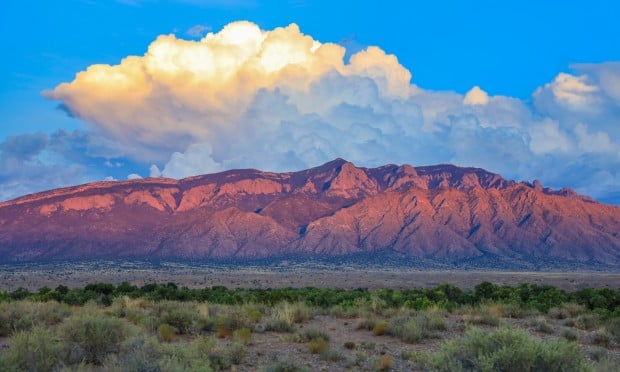Nov. 13 (Bloomberg Politics) — When Marj Perry is working her 611-acre Cold Mountain Ranch in Carbondale, Colo., she's surrounded by 200 head of cattle and the postcard-perfect scenery of the Roaring Fork Valley on the state's Western Slope. What she isn't surrounded by is many doctors. Cold Mountain is spread over two sparsely populated counties, Garfield and Pitkin, which are home to several pricey ski resorts. Those factors helped make Colorado's ski country—which also includes Eagle and Summit counties—the most expensive insurance market in the country last year. Perry and her husband, Bill Fales, were optimistic when they set out to buy insurance under the Affordable Care Act last year, but that soon turned to disappointment. "We're self-employed, we're 61 years old, and we make too much to qualify for the federal subsidies," she says. In the end, Perry and Fales took advantage of a hardship exemption granted by the White House to people who found PPACA-compliant plans unaffordable, and bought catastrophic plans with a $6,000 deductible. A three-hour drive to the east, the news about PPACA couldn't be more different—or better. "Denver may be the most striking example yet of the Obamacare theory working," says Larry Levitt of the Kaiser Family Foundation, a nonprofit that studies health care. A new Kaiser study of health insurance costs in 16 major cities found that Denver's fell the most—16 percent—since PPACA went live, based on a comparison of the benchmark Silver plan for a 40-year-old nonsmoker, the metric upon which federal subsidies are based. "Premiums never go down," says Levitt. "It's almost like the laws of physics. But in Denver and some other places you have insurers competing for market share, and that's actually lowering premiums." Colorado's experience highlights both the law's promise and the challenges it still must overcome to work for everyone. Like most states, Colorado was divided into geographic rating areas, one of only three criteria insurers can use to vary their prices. (The others are a person's age and smoking habits.) Last year, the cost variation among Colorado's 11 rating areas was nearly the widest in the United States, with comparable Silver plans costing 98 percent more in the priciest areas than in the cheapest ones. In February, Frank Hutfless, the Garfield County attorney, drafted a lawsuit claiming that Colorado violated anti- discrimination protections in the ACA by approving such expensive rates in ski country. "Candidly, we believe the way the state has implemented the PPACA is illegal," he says. "It discriminates against rural Coloradans." He wants the state to combine rural and metro regions into a single rating area, but he has held off filing suit as the state tries to adjust. Colorado is now engaged in what may be the country's most aggressive effort to narrow the insurance cost gap—an effort that could provide a model for other states. One challenge is that nearly everything costs more in ski country—not just insurance but gas, groceries, and housing. The seasonal nature of the local economy further distorts the cost of health care. During ski season, Summit County's population swells to about 100,000 from 28,000 as tourists and wealthy second-home owners flood in. To cater to them, the four major hospitals serving the region are equipped with expensive technology and charge higher rates than Denver area hospitals. Other factors driving up insurance costs in Colorado's mountains are common across all rural areas: a scarcity of doctors and a lack of competition among insurers to keep prices in check. A Denver resident shopping for a Silver plan has at least 10 insurers to choose from. "Here," says Hutfless, "we're lucky to get three." Because Colorado took advantage of the PPACA's Medicaid expansion, the law has still had a measurable benefit in ski country, especially among the previously uninsured. Before the law took effect in January, 85 percent of the patients at the Summit Community Care Clinic in Frisco were uninsured. By September that had fallen to 65 percent. "For clinics like ours, the news has been really good," says Sarah Vaine, the clinic's chief executive officer. "I see all these folks who have opportunities they sometimes haven't had their entire lives, people who were very dependent on taxpayer dollars, but are now working again." The main reason even more of her patients haven't gotten coverage, she says, isn't hostility to Obamacare but anxiety about the social stigma of being poor enough to qualify for Medicaid. The law will have a hard time winning converts if it can't reduce high insurance costs for people in rural areas like Marj Perry, the rancher. Colorado has taken several steps toward that end. One consequence of the law has been increased transparency in health care pricing. Now that they can see the dramatic disparity in the cost of routine medical procedures, many ski country residents seek treatment in Denver, where something like a hip or knee replacement can cost thousands of dollars less than it does closer to home. Over time, market forces should push down treatment costs in the mountains. For the PPACA's second year, insurers are competing more aggressively for customers in rural counties, which also has helped ease prices. The biggest development came this summer, when
Marguerite Salazar, Colorado's insurance commissioner, consolidated four of the state's rural rating areas into two, reducing the state's total to nine. "Consolidating the higher health cost regions into larger rating areas will spread the risks and the costs of providing health care more equitably over a larger population," she said at the time. Average rates have fallen more than 7 percent in ski country, but consumers willing to shop around can find better deals. A study conducted for Bloomberg Businessweek by Cynthia Cox of Kaiser found that the benchmark Silver plan in Summit County fell from $484 in 2014 to $266 for the coming year. Colorado is the only state that altered the geographic boundaries of its rating areas this year. Its experience suggests other states also might be able to curb prices. Perry is guardedly hopeful. "We're about to dive in and start
this horrible process again," she jokes. "We'll see if we fare any better this year." The bottom line: Colorado has found ways to help rural areas with high health insurance costs close the gap with cities.
Copyright 2018 Bloomberg. All rights reserved. This material may not be published, broadcast, rewritten, or redistributed.







